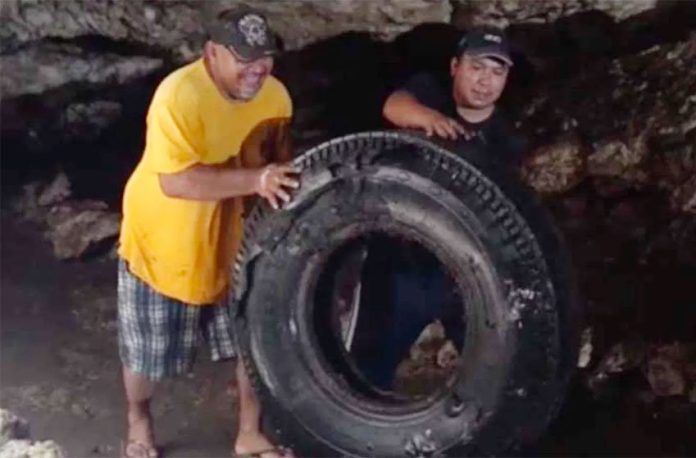Stoves, tires and even accessories for the practice of witchcraft were among the items retrieved from cenotes, or natural sinkholes, in Yucatán during clean-up exercises completed this year.
Around 80 volunteers, including specialist divers, helped to remove rubbish from around 15 cenotes in the state, lead diver and clean-up coordinator Sergio Grosjean explained.
“We found unserviceable stoves, truck tires . . . and even witchcraft products,” he told the newspaper El Universal.
Bicycle wheels and rusty old chairs were also pulled from the state’s sinkholes along with tonnes of garbage.
There are more than 3,000 cenotes dotted across the length and breadth of the Yucatán peninsula and many of the natural pools are popular tourist attractions where visitors can take a dip to cool off from the region’s notoriously steamy weather.
But around 80% of them are heavily polluted, according to statistics based on explorations by speleologists.
Grosjean, an environmentalist and archaeologist who earlier this year led an expedition that discovered a treasure trove of Mayan cave paintings, said that while tourists are believed to be responsible for much of the trash found in cenotes, some of the items recovered indicate that locals are also to blame.
The diver explained that between one and one and a half tonnes of rubbish were removed from each of the cenotes that were cleaned up this year.
However, Grosjean lamented that in many cases volunteers return to the same cenote months later to find it filled with rubbish and junk again.
“Authorities need to work on educating people and raising awareness so that they take care of the cenotes and don’t continue to dump garbage,” he said.
The Yax Ek, Sanhacat, Homún, Abalá and Caucel cenotes were among the beneficiaries of this year’s clean-up efforts.
The Yucatán peninsula’s elaborate underground water networks potentially face another threat to their health from the construction of the Maya Train project.
Experts have warned that land above the aquifers may not be able to support the weight of the tracks and passing trains.
Source: El Universal (sp)
